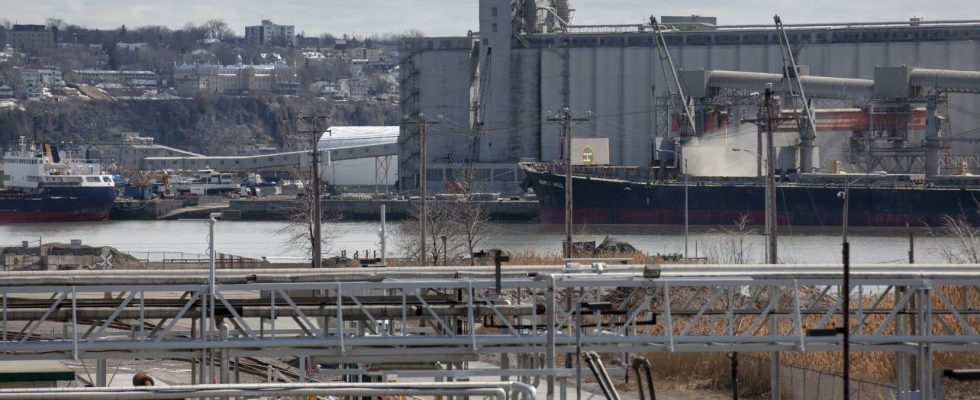The Ministry of the Environment now names a culprit for the repeated exceedances of the nickel standard in the air of Limoilou: the industrialist Glencore, long suspected, but now explicitly named for the first time by the government.
The ministry presented Tuesday morning the results of the increased monitoring program put in place in April 2022 following the controversial reduction in the nickel standard in the air. Observations carried out as part of this reinforced control plan noted that “a relationship exists between the cycle of ships docked at Glencore facilities and the increases in nickel found at the Québec–Vieux-Limoilou station”.
Reducing the threshold for nickel in the air increased the daily standard to 14 ng/m3 at 70 ng/m3.
Despite a standard five times higher than before, the sampling stations located in Quebec noted three episodes of significant exceedance between December 17, 2022 and January 6, 2024. The concentration of nickel in the air of Limoilou then oscillated between 120ng/m3 and 151 ng/m3.
Each time, a bulk carrier from the giant Glencore took on nickel at the port of Quebec.
The fifty inspections carried out “at the port of Quebec and nearby” by the ministry as part of its control plan revealed shortcomings, 12 of which were worth issuing a notice of non-compliance. Of this number, one notice “is related to nickel” and 11 “concern various breaches having little impact on the environment”, underlines the Ministry of the Environment.
Glencore received a notice on February 29 “for not having maintained in good working order and not having optimally used equipment to reduce the release of contaminants into the environment between December 29, 2022 and January 6 2023,” the ministry said in a press release.
” They do not have the choice “
Faced with these findings, the government demanded corrections from Glencore to reduce nickel emissions into the air during its transshipment activities. “The company must provide, within the coming weeks, a plan of corrective measures aimed at preventing this failure from repeating itself,” notes the ministry.
The Minister of the Environment, Benoît Charette, welcomed the work carried out as part of the monitoring program and announced that it will continue in 2024. “There could be fines. We will take all necessary recourse so that our laws and regulations are respected,” he indicated.
The government is waiting to see Glencore’s plan before sanctioning the company. If the industrialist’s response is slow to come — or if it does not correspond to the ministry’s expectations — the latter could quickly issue an execution notice to impose a deadline on the company. “We have a whole control regime which allows administrative sanctions. If the response does not reach us quickly enough and if it is unsatisfactory, we will not let weeks and months pass. »
“What catches my attention is that the minister is not cracking down,” lamented Jean-Lesage’s solidarity MP, Sol Zanetti. “It gives deadlines, slaps on the wrist, to a company which made 4.3 billion dollars last year and which will be able to continue to pollute without financial constraints. » The MP recalled that a ministry study had already established in 2013 that the nickel came from the port of Quebec. “We’ve known for years that it’s just Glencore that transships it,” added the supportive MP. We’ve been under sanctions for a long time. »
“Glencore must adapt, Glencore must improve: they have no choice,” reacted the mayor of Quebec, Bruno Marchand. The notice of non-compliance given to the company “had already shaken the columns of the temple”, according to him. “The ministry is ready to go further, and that’s good,” the mayor also indicated.
Limoilou district municipal councilor Jackie Smith quickly declared victory. “The ministry is finally pointing the finger at those responsible. We will closely monitor the measures that Glencore intends to put in place to correct the situation and we will continue to ask the ministry to return to the previous standards for the concentration of nickel in the air. »
In an email sent on 1er March to Duty, Glencore insisted on the investments made until now to reduce the presence of nickel generated by its activities at the port of Quebec. “Our persistent commitment to improvement continues to guide our efforts to minimize particulate emissions,” the company wrote. This is reflected in particular by investments which total to date 60 million dollars. »
With François Carabin and Marie-Michèle Sioui
